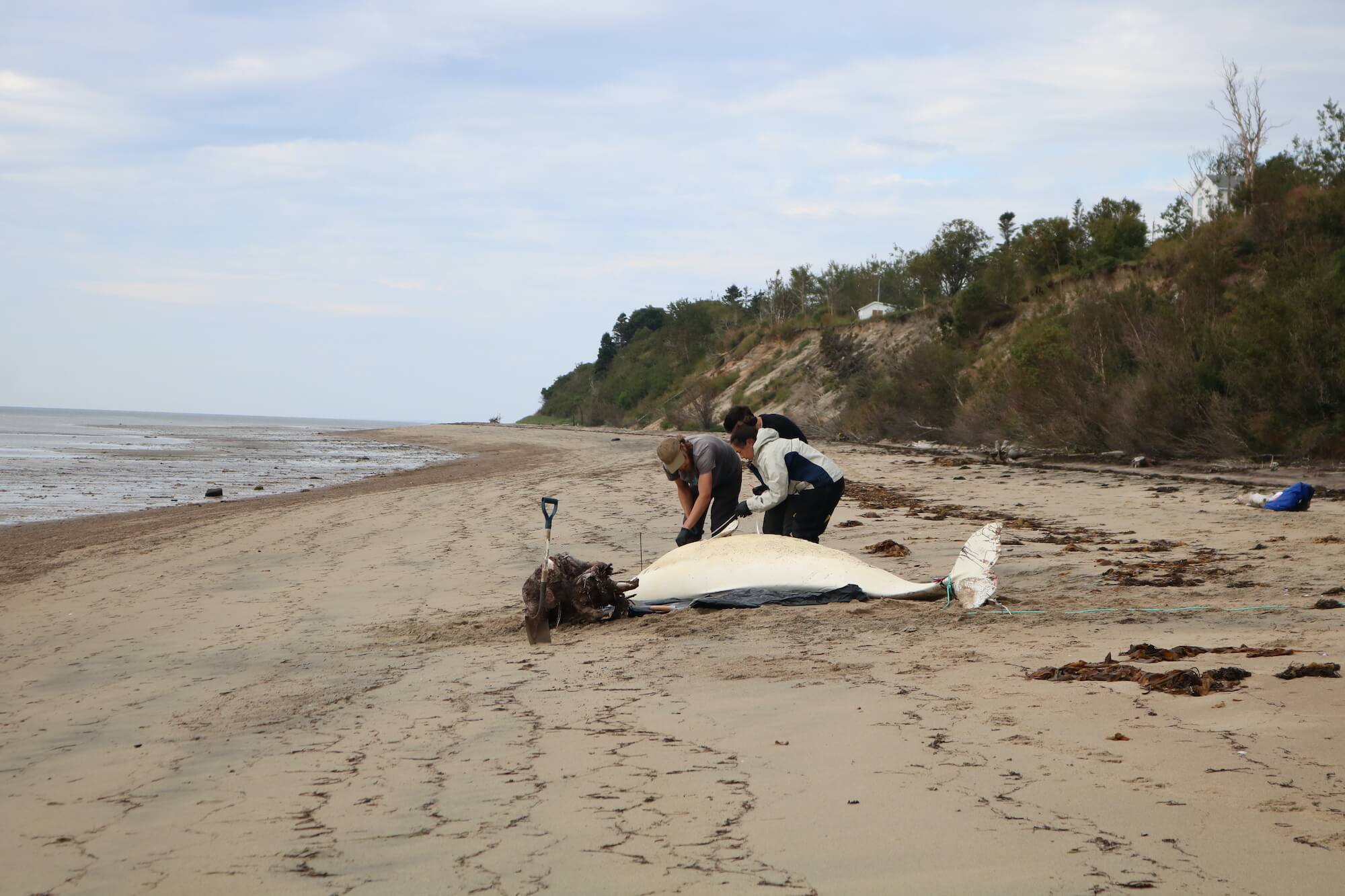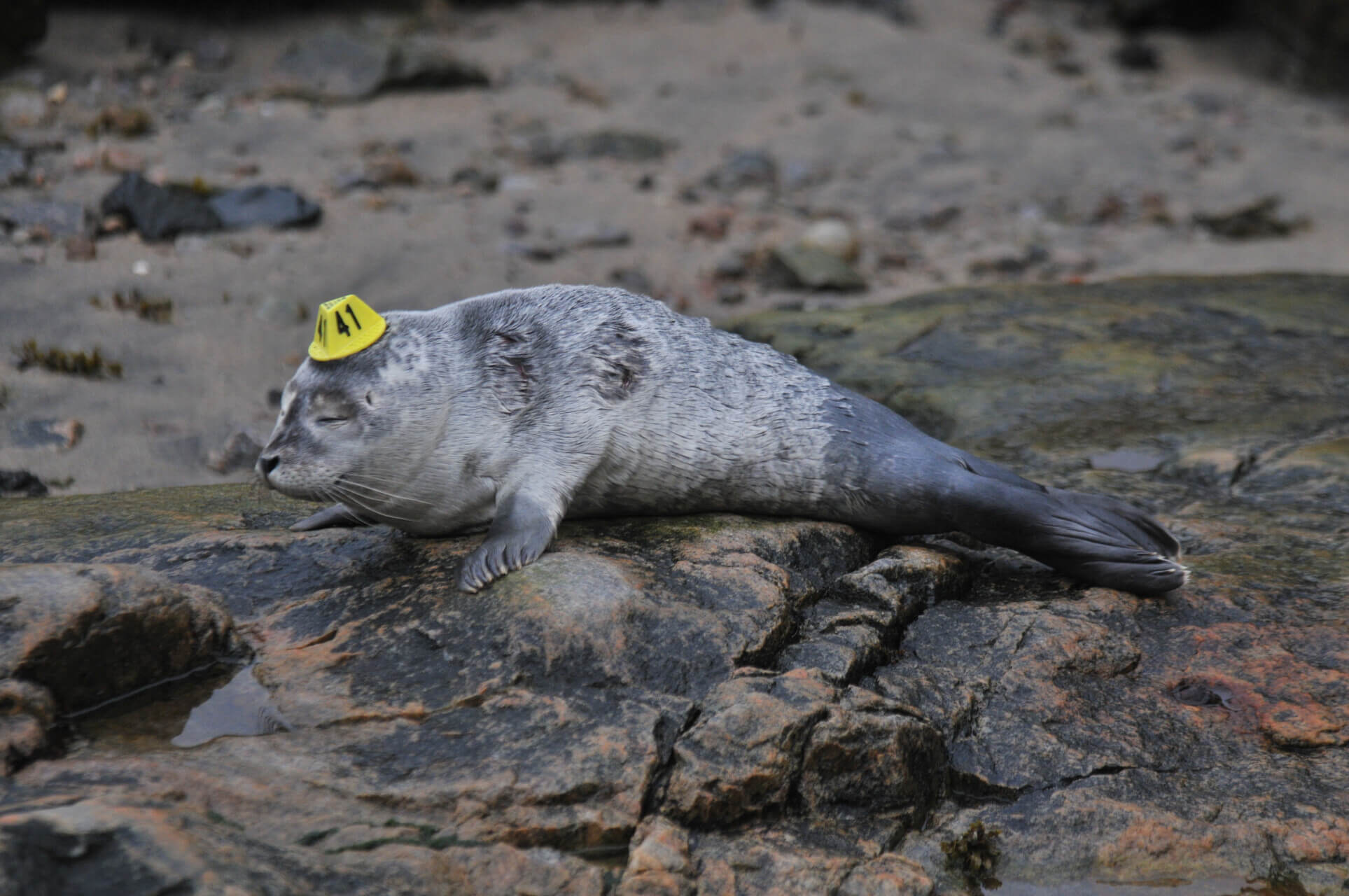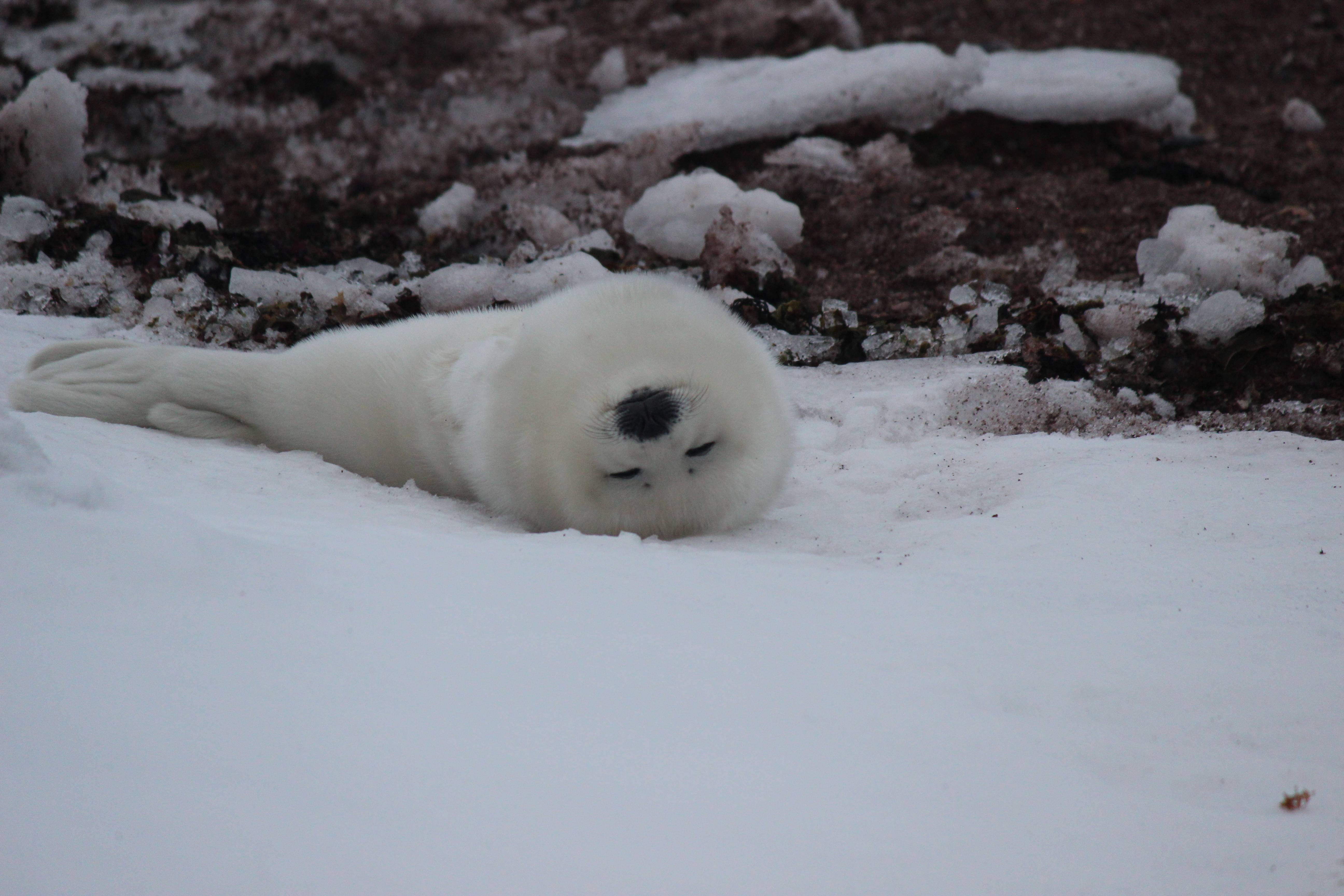Since the beginning of winter, Marine Mammal Emergencies has received reports of seals on the ice in the Gaspé region, Rivière-du-Loup and farther upstream, in the Portneuf and even Sainte-Anne-de-Sorel regions. Witnesses who call 1-877-7baleine are concerned; these animals are said to “trapped”, “in trouble”, “lost” or “abandoned”. Is this really the case?
Marine… and land mammals
Seals are mammals whose lives are split between the sea and land, or pack ice in winter, depending on the species. The ringed seal, for example, is an Arctic species that lives almost exclusively in an ice-covered environment and therefore rarely accesses fresh water. The aquatic environment typically provides them with their diet and mobility, allowing them to skillfully swim with their webbed feet. The terrestrial environment allows them to rest, breed and even give birth.

Their hind legs, which are always pointed backwards, become useless when they move about on a solid surface. To get around, seals undulate their entire body almost like a caterpillar would. They can sometimes give the impression of being clumsy or in difficulty or in the process of “struggling”, as was recently reported to Marine Mammal Emergencies, but this is not the case. Their means of locomotion on ice is simply not very graceful! The feet are equipped with strong claws, which help them grasp the ground or ice. Their fur also has non-slip properties. To minimize excessive heat loss in a cold or frigid environment and act as an energy reserve during periods during which they go without feeding, seals have a thick layer of fat. Seals are thus well adapted to winter conditions and the presence of ice in the St. Lawrence and can spend several hours or even days on the ice floes.
Wide-ranging seals

This time of the year, the St. Lawrence is home to northerly species of pinnipeds, namely harp and hooded seals. The harp seal population is now estimated at more than 7 million head. In late February and early March, tens of thousands of harp seals head down to the Magdalen Islands to calve on the ice surrounding the archipelago. Juvenile seals are also regularly observed in various portions of the St. Lawrence, sometimes even into the Fluvial Section along riverside towns. These individuals are considered to be young explorers who push the limits of their normal range, perhaps motivated by food or simple curiosity. That said, these animals are not necessarily in trouble and no action will be undertaken to relocate these seals.
As a year-round resident in the St. Lawrence, the harbour seal is also observed in winter. In the Gulf of St. Lawrence, the Kamouraska tidal flats and Rivière-du-Loup, as well as numerous islands such as Île aux Fraises, Île aux Lièvres, Les Pèlerins, Île Blanche, Îles du Bic and the Métis-sur-Mer area are important haulout sites for this species. In the Gaspé Peninsula, harbour seals are observed regularly in the area of Forillon National Park and the Petit-Gaspé haulout. Other sites along the St. Lawrence are used by small numbers of individuals. Thus, it is not unthinkable to observe this seal with its canine-like head lying on the ice in the coming months!
To learn more:
On the Marine Mammal Ecowatch Network (ROMM) site: Marine wildlife: Seals and Antlantic walrus
Interview (in French) with Josiane Cabana, spokesperson for the Quebec Marine Mammal Emergency Response Network, on the presence of harbour seals in Gaspé on December 10, 2015, Radio-Canada.





